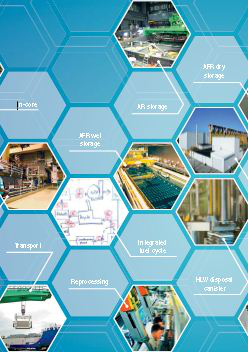Speaker
Dr
Matt Mellor
(Createc)
Description
Spent fuel reprocessing leads to accumulation of fission product residues within the reprocessing equipment. Although these are managed during operations through regular washouts, many parts of the system will continue to hold residues for a variety of reasons. As reprocessing plants reach the end of their operating lives, the significance of these residues changes as the focus switches from operations to Post Operation Clean Out (POCO) and eventual decommissioning. In particular there is a desire to optimise the POCO process so that the wastes during decommissioning can be minimised.
We present results and learning from several applications of 3D gamma imaging for assessing distribution and activity of reprocessing residues at Sellafield in the UK. Sellafield has three generations of reprocessing plant, one of which has begun decommissioning and the other two of which are preparing to enter POCO within the next 5 years. The N-Visage 3D gamma imaging system has been applied to several areas of these plants to evaluate its performance as a POCO and decommissioning management tool. These areas include solid fuel processing and dissolution, first strip, and waste stream concentration and storage.
Gamma 3D gamma imaging has been able to improve the planning process for decommissioning and POCO in a number of ways. In the case of the decommissioning of a fuel cutting cell, knowledge of the 3D distribution of activity of Cs 137 was used to forecast the evolution of dose rates within the cell during decommissioning, enabling a clear ALARP justification to be made for the preferred decommissioning method. By comparing the ratio of isotopes with different half lives in a mixer settler, it was possible to demonstrate that residues were accumulating over time within a particular component, identifying a potential focus area for POCO. By mapping isotopes independently a forecast of the dose rate after a ‘cool down’ period can be made on a zone-by-zone basis, to aid decommissioning planning.
Finally, we will also present some initial results from Fukushima, indicating how similar processes can contribute to the management of nuclear accidents.
Country/ int. organization
UK
Author
Dr
Matt Mellor
(Createc)
Co-authors
Dr
Alan Shippen
(Createc)
Mr
Chris Woolhouse
(REACT Engineering)

